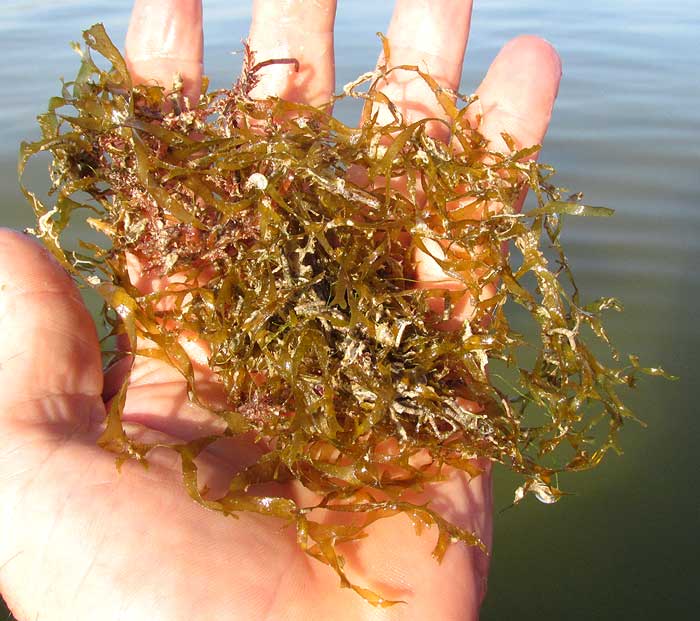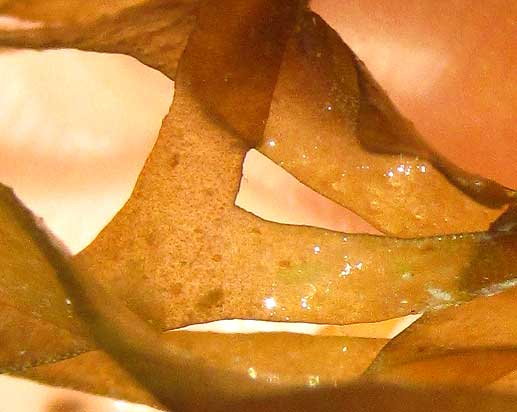Excerpts from Jim Conrad's
Naturalist Newsletter

from the January 25, 2015 Newsletter issued from Río Lagartos, on the Yucatan Peninsula's northern coast (~N21.60°, ~W88.16°), Yucatán state, MÉXICO
CANISTROCARPUS CERVICORNIS
While identifying a fish I stumbled upon a web page on which not only the fish was identified but also the clump of alga the fish was hiding in. I'd seen that alga before, and pictures of it were somewhere in my heap of unidentified organisms found washed up onto various beaches. Above, you can see what this alga looked like after washing onto the Gulf of Mexico beach across the estuary from Río Lagartos.
With its golden color and thin, ribbon-like, semi-translucent leaves, or thalli, this is a distinctive alga. A closer look at its special system of thallus branching is provided below:

What's special about the branching is that as the thalli grow longer they systematically branch into more or less same-sized branches. Such branching of anything is said to be "dichotomous." A close-up showing how thin and semi-transparent the thalli are, with tiny speckles appearing throughout, is shown below:

Several alga species are similar to this but our pictures best match a species known to commonly occur in the Gulf of Mexico, CANISTROCARPUS CERVICORNIS, which has no good English name. It's a brown alga of the class Phaeophyceae, and the family Dictyotaceae, which is a large family whose members in general occur in water that's warmer than most other brown algae.
Canistrocarpus cervicornis vaguely looks like linguine pasta, so it's natural to wonder how it survives in waters teeming with fish, sea turtles, sea urchins, crabs and gastropods that eat such algae. Studies suggest that many algae might be waging chemical warfare against aquatic herbivores. A 2010 paper by Éverson Bianco and others in Brazil reports on chemicals in our alga that drastically inhibit the feeding of a species of sea urchin. Other studies find that Canistrocarpus cervicornis contains polysaccharides that are anticoagulant and antioxidant.
It's clear that brown algae are slopping over with interesting chemicals, and currently laboratories all over the world are figuring out what the chemicals might be doing, and how they might be of service to humans.